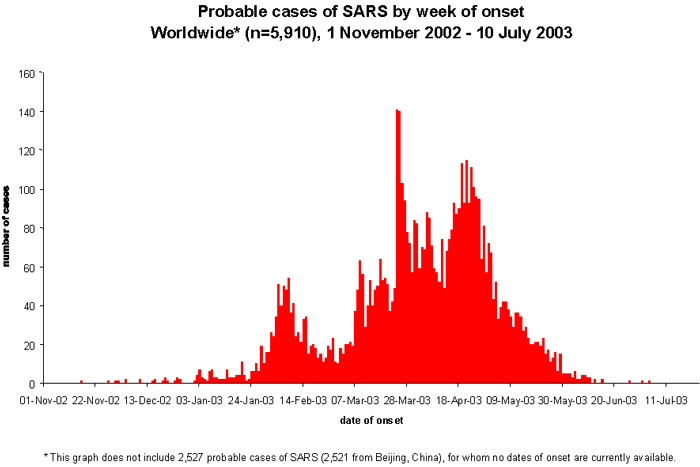An update on coronavirus disease
Update 24-Mar-2020: Information on this page is outdated and is useful for historical purposes only. For the latest information, please visit the CDC.
Update 11-Mar-2020: Sharing an excellent session on COVID-19 that was presented recently at the Conference on Retroviruses and Opportunistic Infections (Boston, MA).
Like everyone else, I have been watching the coronavirus outbreak carefully, and trying to separate the science from the hype. My dear friend and colleague Dr. Michael LeVasseur at the Drexel University Dornsife School of Public Health put together an informative and easy to understand presentation about the virus, the disease, and the epidemiology. I encourage my readers to watch it here. For those interested, he has also been kind enough to share his slides.

As to how the current outbreak will progress, the severe acute respiratory syndrome (SARS) outbreak of 2003 can shed some light on the current outbreak. While the virus that caused SARS (SARS-CoV) is distinct from the virus that causes CoViD-19 (SARS-CoV-2), we still see similarities in that they are both zoonotic in origin and share a phylogenic lineage. As is typical of respiratory viral diseases, they peak in the colder months and decline - although do not disappear - in the warmer months. SARS-CoV has not been circulating in the wild since 2004, and was perhaps, an anomaly in that it disappeared from human transmission. Many other coronaviruses circulate year round, including the ones that cause the common cold. Nevertheless, the epidemic curve from SARS (figure below) shows two distinct peaks in disease cases: it was a bimodal outbreak distribution. The early peak in late January/early February was the initial outbreak, when the disease was recognized, although the animal to human leap occurred much before that. This was characterized by more severe disease, and then a month or so later we see the second, much larger outbreak of SARS as it spread around the globe. This was characterized by less severe disease and lower mortality. This is in fact quite typical in disease outbreaks: earlier cases represent more severe disease, and as awareness and surveillance increases, we capture many more confirmed and probable cases. Thus the early portion of an outbreak is frequently underestimated.
 Source: World Health Organization, Epidemic curves - Severe Acute Respiratory Syndrome (SARS). https://www.who.int/csr/sars/epicurve/epiindex/en/index1.html
Source: World Health Organization, Epidemic curves - Severe Acute Respiratory Syndrome (SARS). https://www.who.int/csr/sars/epicurve/epiindex/en/index1.html
Comparing the present day SARS-CoV-2 virus transmission to SARS-CoV, it is quite possible we have just passed the early part of the outbreak, characterized by more severe disease, and could be now seeing the less severe more global distribution. Of course, this is just speculation, but it would follow the expected pattern given certain conditions. There are some key epidemiological differences between SARS-CoV and SARS-CoV-2 that are worth noting that would impact this comparison. First, SARS-CoV was more severe (greater case fatality rate) and was less infectious (lower R0) compared to SARS-CoV-2. In general, it is easier for a less deadly or pathogenic organism to spread than a more deadly organism, otherwise it would burn itself out to the point of extinction, which is most likely what happened with SARS in 2003. Second, the public health response to SARS versus CoViD-19 has been much different including stricter quarantine and containment procedures. This could effectively ameliorate the second peak in the epidemic spread of SARS-CoV-2. SARS-CoV-2 will likely go endemic causing little disease in the warmer months, April-May in the Northern hemisphere, and given that it is a less deadly virus as compared to SARS, may very well circulate this coming year as well. It will be instructive for us to compare epidemic curves after the current season to see how similar it in fact was to SARS.
I would also suggest everyone consult the CDC for updates. Please, do not believe everything you hear on the news or from your friends or family, or even read here. There is still a lot of uncertainty surrounding this virus and this disease. The risk of getting infected remains low in the U.S. - you are much more likely to get sick from the common cold (including other coronaviruses) or seasonal influenza at this point in time. And, for those infected with SARS-CoV-2, the risk of serious disease or death is also low. We further need to be cautious about stigmatizing anyone or any place.
Lastly, wash your hands!
Cite: Goldstein ND. An update on coronavirus disease. Mar 1, 2020. DOI: 10.17918/goldsteinepi.
